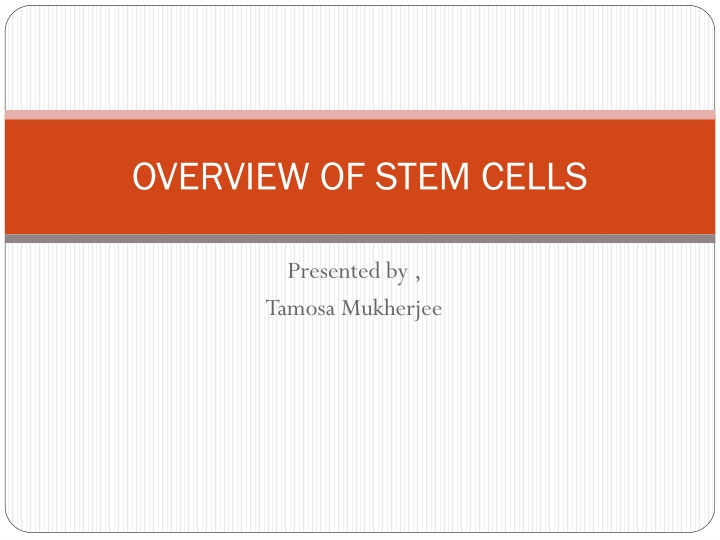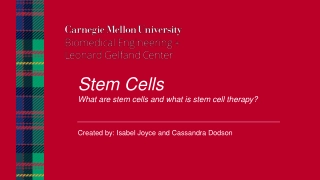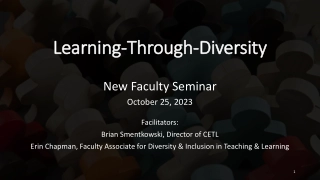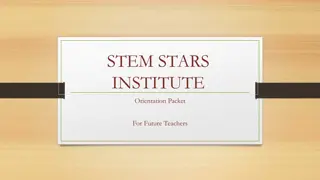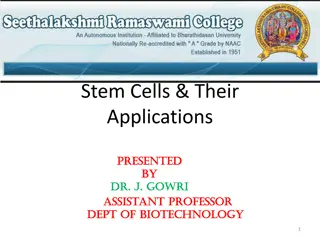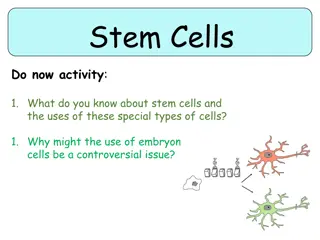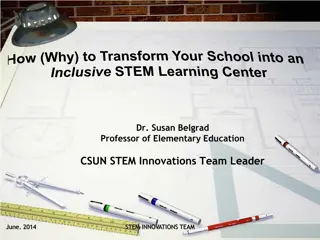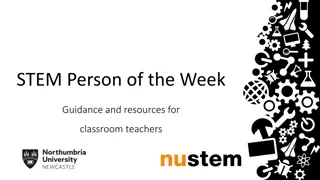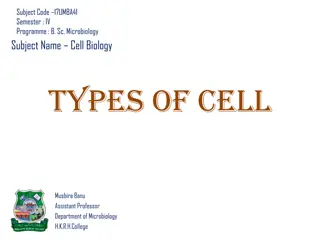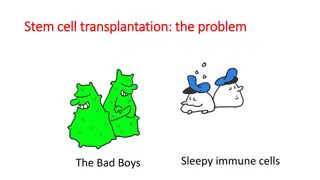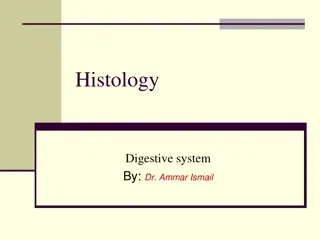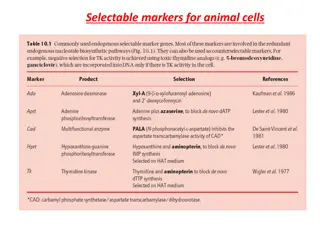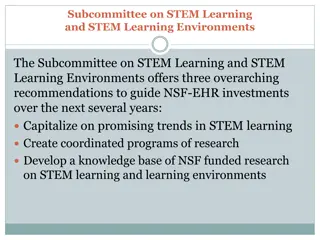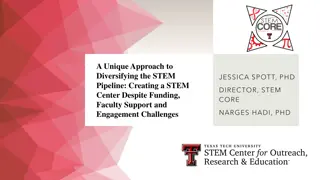OVERVIEW OF STEM CELLS
Stem cells are unique cells with the potential to develop into various cell types. This overview covers their history, properties, division process, classification, and applications in healthcare and research. Explore the fascinating world of stem cells and their importance in medical advancements.
Download Presentation

Please find below an Image/Link to download the presentation.
The content on the website is provided AS IS for your information and personal use only. It may not be sold, licensed, or shared on other websites without obtaining consent from the author.If you encounter any issues during the download, it is possible that the publisher has removed the file from their server.
You are allowed to download the files provided on this website for personal or commercial use, subject to the condition that they are used lawfully. All files are the property of their respective owners.
The content on the website is provided AS IS for your information and personal use only. It may not be sold, licensed, or shared on other websites without obtaining consent from the author.
E N D
Presentation Transcript
OVERVIEW OF STEM CELLS Presented by , Tamosa Mukherjee
CONTENTS Introduction History Unique properties Division Classification Embryonic stem cells Adult stem cells Sources Applications
WHAT ARE STEM CELLS ? Stem cells are special human cells that have the ability to develop into many different cell types ; These are biological cells found in all multicellular organisms. A stem cell is uncommitted , until it receives a signal to develop into a specialized cell.
HISTORY The term stem cell was coined by Alexander Maximow in the year 1909. In 1963, Ernest McCulloch and James Till demonstrated the presence of hematopoietic stem cells in mice. Robert Good in 1968 performed the first successful bone marrow transplantation on a child.
UNIQUE PROPERTIES Unspecialized, also called Blank cells . Can divide in self renewal without undergoing senescence; called as proliferation. Differentiates into several specialized cells, like heart muscle cells, blood cells or nerve cells. Plasticity
Stem cell division Stem cell divides into one cell identical to the original Another cell that is differentiated Obligatory asymmetric replication One stem cell develops into two differentiated daughter cell Or two identical stem cells are produced identical to the original Stochasttic differentiation
CLASSIFICATION embryonic adult Source of origin totipotent Stem cells Pluripotent Potency multipotent Oligopotent Unipotent
EMBRYONIC STEM CELLS Pluripotent in nature and are derived from the inner cell mass of blastocyst or earlier morula stage. 4-5 days old and have 50-150 cells. Able to differentiate into all derivatives of the three germ layers. Do not contribute to extraembryonic membranes or the placenta.
Advantages of embryonic stem cells Flexible : potential to make any cell. Immortal : can provide endless supply of cells Availability Disadvantages : Uniform and homogenous differentiation is difficult Immunogenic
ADULT STEM CELLS Also called somatic stem cells; Undifferentiated cells found among differentiated cells or an organ . Multipotent in nature Present in bone marrow and other tissues. Primary role is to maintain and repair the tissue in which they are found.
Advantages of Adult Stem Cells Non-immunogenic to recipients who receive products of their own stem cells. Relative ease of procurement. No harm done to the donor. Disadvantages : Limited quantity Finite Less flexible
Sources of Stem Cells Bone marrow Blood Umbilical cord blood Fetal tissue (after abortion ) Embryos created by IVF
Induced Pluripotent Stem Cells (IPCs) Reprogrammed adult cells to give rise to pluripotent capabilities. Used for therapeutic purposes. Fetal Stem Cells Fetal proper stem cells come from the tissue of the fetus obtained after an abortion. Extraembryonic fetal stem cells come from extraembryonic membranes.
Amniotic Stem Cells Multipotent stem cells derived from the amniotic fluid. Can differentiate in cells of adipogenic, osteogenic, myogenic, endothelial, hepatic and also neuronal lines.
Applications Stem cells can be used to study development. Have the ability to repair and replace damaged cells. Disease study Provide resource for new medical treatments.
